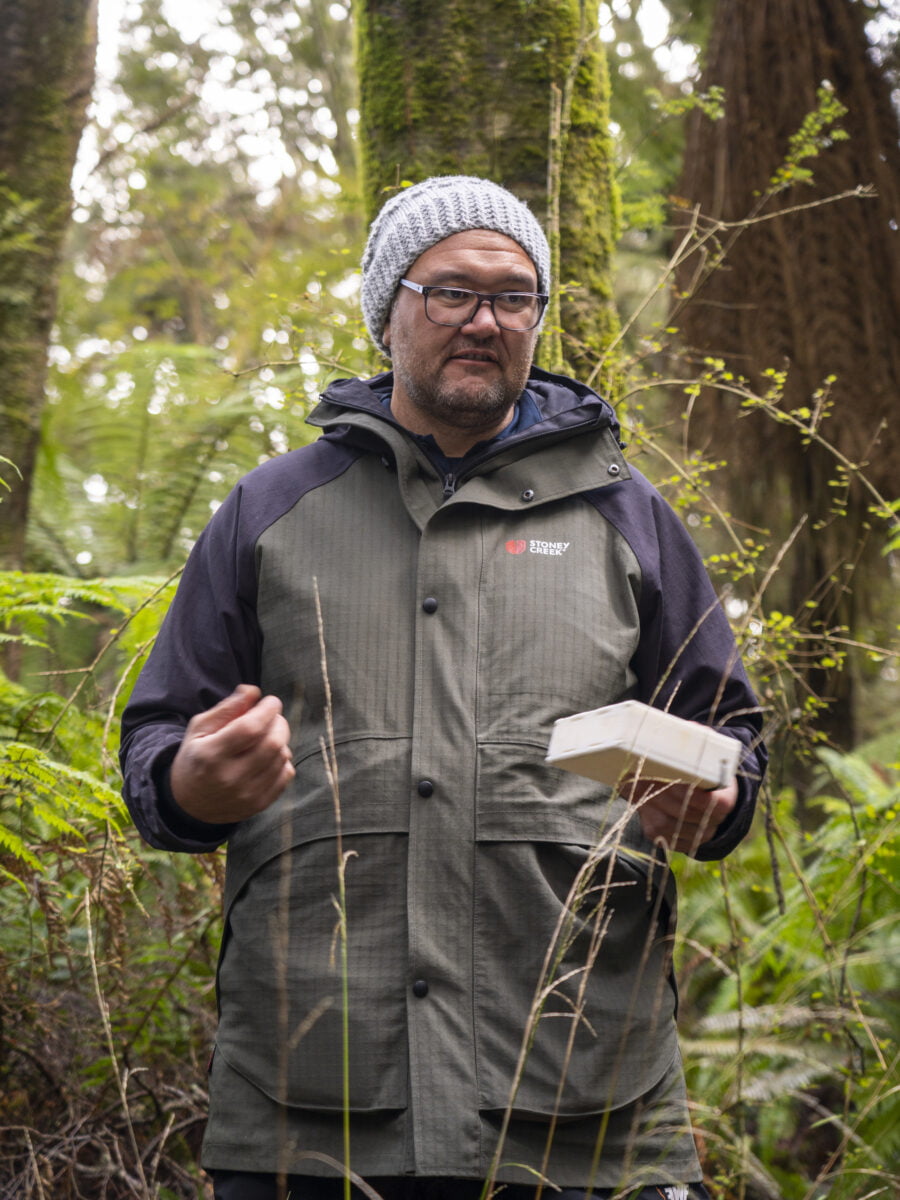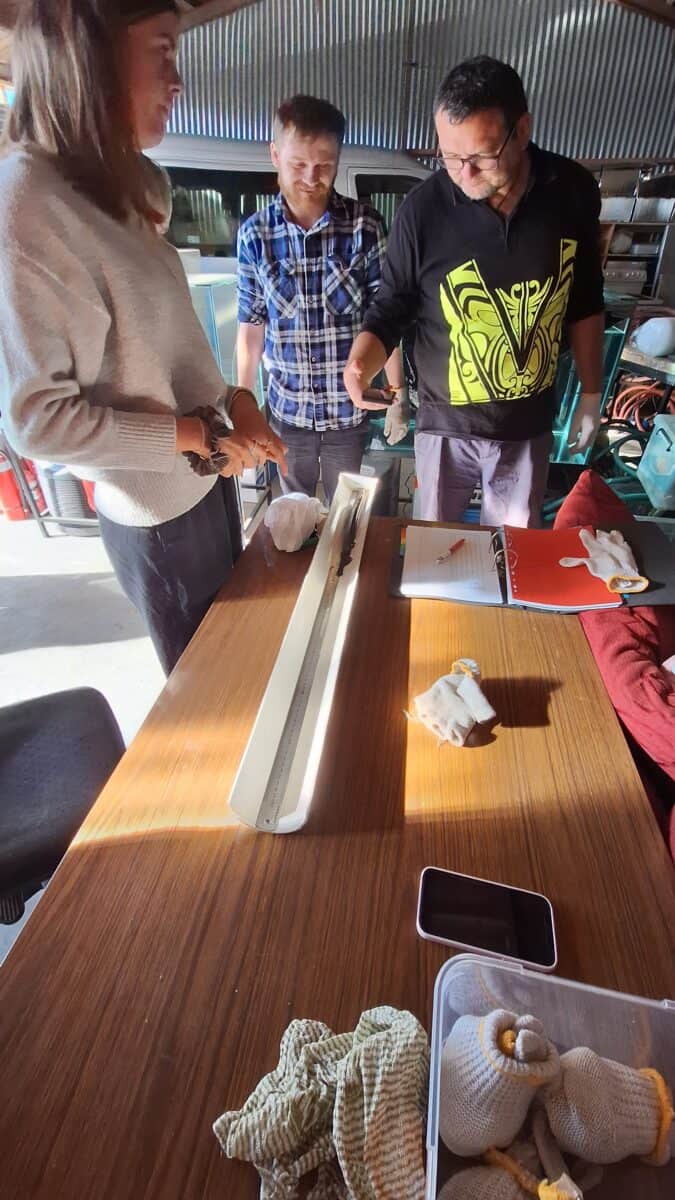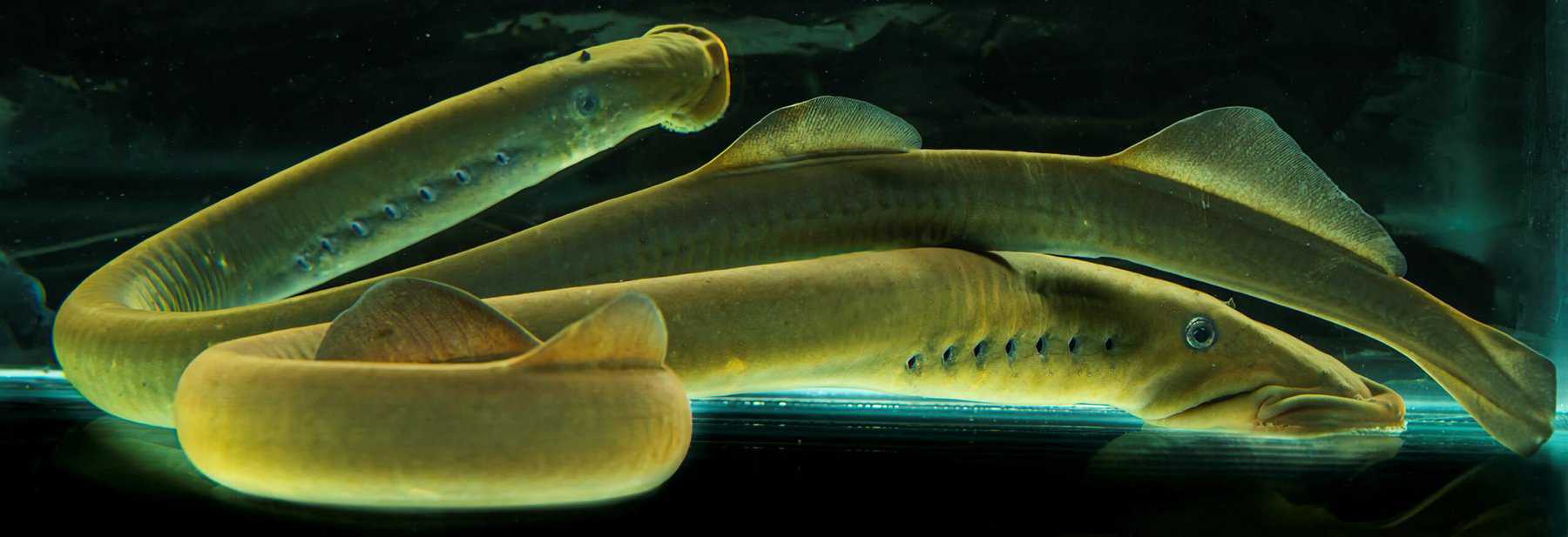For years, Riki Parata has been the kaiārihi taiao (environmental lead) for the environmental efforts of Hokonui Rūnanga, one of 18 rūnanga (local councils) of Ngāi Tahu and the only one located in inland Te Waipounamu (South Island).
Riki did an environmental science Master’s at the University of Waikato, focusing on kōura (freshwater crayfish). He was inspired to pursue that course of study by kaumatua Rewi Anglem in Hokonui.
“They wanted to research taonga species so they could revitalise, rehabilitate and commercialise them,” says Riki.
Since completing his studies, Riki has been helping lead the wai māori (freshwater) efforts for Hokonui as kaiārihi taiao. The wai māori team have been incredibly busy – for example, they have monitored kanakana (pouched lamprey, also known as the piharau) at Mataura Falls and are training an AI machine learning tool to monitor kanakana health, particularly in terms of lamprey reddening syndrome.
This work has been supported by the many partnerships Hokonui Rūnanga has built over the years, including with Cawthron Institute, Kitson Consulting, Plant & Food Research, University of Canterbury, NIWA, Te Wai Māori Trust, and BioHeritage through Freshwater for our Taonga.
“We’ve had a lot of support from our partners,” says Riki. “Without them, we’d still be plugging away, researching our taonga, but having support has accelerated our research.”

A big component of BioHeritage’s support was sponsoring two Hokonui Rūnanga delegates and Matt Wylie (read his Ngā Pī Ka Rere Spotlight profile here) to travel to the USA and meet with Indigenous groups to share and gather resources concerning the captive breeding and conservation of Pacific lamprey, a story which was covered in July 2023.
“We’ve lost kanakana from a lot of tributaries, a lot of iwi around New Zealand have lost it, so if we can successfully breed and transfer this species, that would be huge for us,” says Riki.
After seeing how breeding and transfer programmes were done in the USA, BioHeritage provided funding to Hokonui Rūnanga to set up tanks for a kanakana captive breeding programme.

“We’re hoping that this spring they’ll get to a spawning stage,” says Riki. “The whole plan is to rehabilitate some of our streams that no longer have kanakana but to also teach other iwi and other organisations how to do it.”
BioHeritage has supported the Hokonui Rūnanga breeding programme by resourcing scientists to assist with the development and operationalising of artificial kanakana propagation.
“We’re kind of the doers,” says Riki. “We get in there amongst it and give it a go. Then that whole team backs us up and helps us with the wording and development of papers and such.”
Even though BioHeritage and other funding streams that are supporting this work are ending this year, Hokonui Rūnanga have decided that they want to take it further. This has led to the conceptualisation of Taonga Research.
“My task now, as I’ve moved from the environmental lead to more of a developmental coordinator for Taonga Research, is to investigate the feasibility of a dedicated research facility down here in Murihiku.”
Taonga Research, which is being spearheaded by Hokonui Rūnanga and supported by other kaimahi and whānau, will initially focus on kanakana, but the intent is to grow the research capacity to include other freshwater taonga species and eventually land and ocean-dwelling species as well.
“That’s the big goal, the big hairy audacious goal,” says Riki.
To work towards accomplishing this goal, Riki is looking for sustainable ways to resource Taonga Research. First up, Riki is investigating what opportunities there are through the established, long-term partnerships Hokonui has.
“We’re very lucky here at Hokonui where we’ve developed partnerships with a lot of our users of the Mataura River,” says Riki, naming meatworks, dairy operators and energy companies. “We’re leveraging those relationships to contribute to supporting us in our research, especially those which are actively looking to support freshwater projects.”
With time, Riki hopes to augment partner funding with commercial opportunities, from advisory and consultancy roles to kōura aquaculture.
Although there may someday be a commercial aspect of Taonga Research, Riki and Hokonui would first and foremost like to restore taonga species. “Taonga Research can be a real contributor to making restoration and rehabilitation happen,” says Riki. “And not just for kanankana, but for other taonga, like our endangered manu out there. That’s the long dream.”
For more information, Riki can be contacted at
Jenny Leonard
